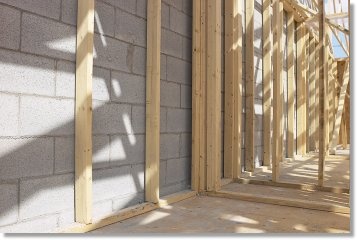Slab Settlement Foundation Repair
 Concrete slab settlement is often because the moisture content and density of the soils under the slab have changed. Missouri soil (especially the clay-type soil we have under a concrete slab) can dry and shrink over time due to extended dry conditions. Leaking sewer, water or HVAC systems can over time also affect your concrete slab or basement floor by washing out the soil from beneath it. This creates uneven, settled, concrete floors.
Concrete slab settlement is often because the moisture content and density of the soils under the slab have changed. Missouri soil (especially the clay-type soil we have under a concrete slab) can dry and shrink over time due to extended dry conditions. Leaking sewer, water or HVAC systems can over time also affect your concrete slab or basement floor by washing out the soil from beneath it. This creates uneven, settled, concrete floors.
When your structure was built, the soil may have been loosely compacted which may have consolidated under the slab causing floor cracks, tripping hazards and other cracking and settling throughout a basement or garage. When a void under a slab happens it may settle or tip up on one end causing a hazard for the owners to trip over.
Concrete slab heaving can also be a concern. If your basement slab is heaving in the middle it could be pushing your basement posts upwards and cause damage on the floors above.
Foam Injection / Mudjacking For Settled Slabs
Polyurethane (or grout injection) concrete raising and mudjacking are two methods used to raise and support sunken or unstable concrete slabs, by drilling holes and pumping material under the concrete slab.
Raising concrete with polyurethane foam is done with incremental injections. Lifting foam will fully expand within 10-15 seconds allowing you to monitor the raising and preventing over raising the slab. This provides a cost effective means to restore settled concrete slabs.
Void Filling
Concrete settling is not the only issue that injection can solve. Voids under slabs are often present in areas where wash out may have have occurred. This method of foam injection will weigh on average 15-25 times less than a cementitious grout mix, applying less stress on an already failed subgrade. The process for void filling is the same as concrete raising: drilling, port installation, and injecting the material.
Joint/Slab Stabilization
Slab stabilization is often required when slabs lack support, but may or may not be settled. Slabs can crack when loads exceeding its capacity are applied.
Slab/joint stabilization applications require the voids to be filled to eliminate movement and offer support. This type of foam is specifically designed for joint/slab stabilization applications due to its very long reaction time and minimal expansion strength. It will take longer to expand, allowing for better coverage under the slab or down a joint.
When compared to concrete replacement, the process of raising concrete with polyurethane foam is inexpensive. It is also exponentially faster than replacing concrete.
Repaired areas are ready within minutes to be utilized, as they were intended.



